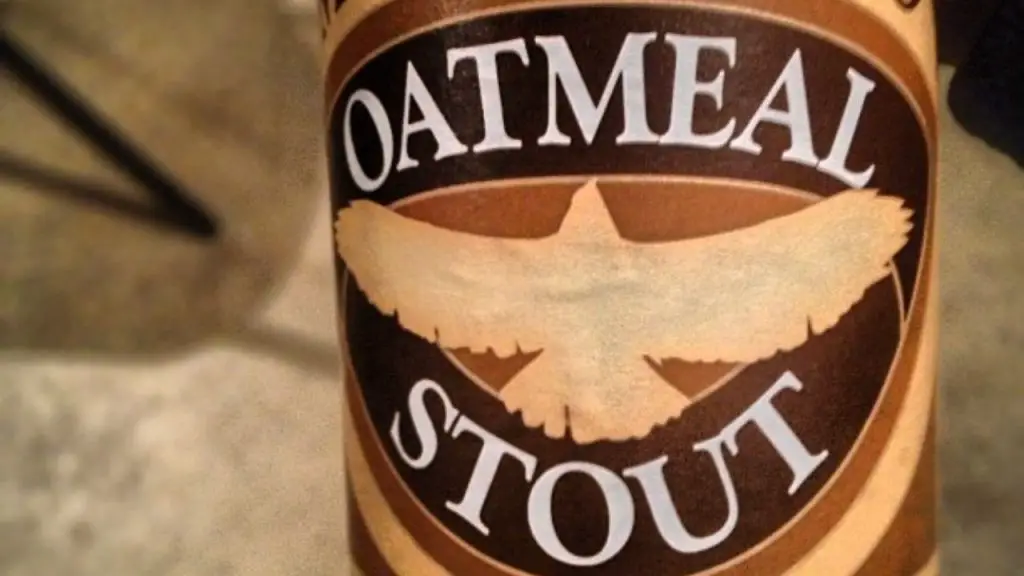Are you looking for a stout that’s not too intense or sweet?
An Oatmeal Stout might be a perfect choice!
It’s not too dry, not too toasty, and not too alcoholic.
It’s just right for those who don’t like overly hoppy or dessert-like beers, and it’s perfect for any season.
So, next time you’re in the mood for a stout, try some stout oatmeal recipes!

Oatmeal Stout 101
You’ve probably heard of oatmeal stout, a type of stout that derives from the Heritage Porter.
Oats were used in ancient brew kettles in Switzerland during the Bronze Age but eventually fell out of favor.
In England and Scotland, however, oats were plentiful, and they eventually returned to brewing recipes.
In the mid to late 1800s, oatmeal stout was believed to make beer healthier and was even prescribed to nursing mothers and ailing children.
Oatmeal stout was also thought to be a remedy for sickness.
In 1980, Charles Finkel of Merchant Du Vin and Samuel Smith Old Brewery in Tadcaster, England, collaborated to bring oatmeal stout back into the spotlight.
Homebrewers in the 70s and 80s, inspired by Michael Jackson’s 1977 book, World Guide to Beer, also helped revitalize the style.
Oatmeal stout is unique because only five percent of the grist must be oats.
This gives the beer sweetness and smoothness, especially since oatmeal stouts are usually only 4-5% beers.
The roasted grains and hop additions also help to balance out the sweetness.
Adding more oats can be tricky, as it can make the beer too thick.
Try these Delicious Chocolate Stout Recipes.
Oats 101
Do you love oatmeal stouts?
If so, you’ll want to know the oat content of your favorite brew.
Generally, commercial and homebrewed oatmeal stouts contain 5 to 10 percent oats in the grist.
This amount is a balance between flavor and practicality.
Too many oats can make sparging (draining liquid from the lauter tun) slower and more complex.
Commercial brewers must be mindful of this, as they have production schedules to meet.
Homebrewers, however, don’t have the same constraints.
That said, a higher oats content can lead to a stuck runoff.
To avoid this, lauter slowly and patiently.
Samuel Smith’s and Young’s use 5% oats, while some brewers prefer 10% to 20% for a smoother taste.
But too many oats can make the beer astringent and grainy.
So, there’s an optimum range for oat content.
Enjoy your oatmeal stout!
Try These 2 Delicious Pastry Stout Recipes.
Brewing Oatmeal Stouts
Mashing with oats can be tricky.
To get the starches converted, you need to use malted grain.
Oats have no enzymes that can do this on their own.
The starches inside are encased in complex cellular structures, so they must be gelatinized before use.
You can buy rolled oats in the supermarket.
The “quick cook” or “one-minute” oats are best, as they have a finer cut and more surface area.
Special flaked oats are also available in homebrew supply stores.
Steel-cut oats are cheaper, but they need to be cooked before use.
Boil two gallons of water per pound of grain, then add the oats.
Boil for 45 minutes to two hours, stirring every five minutes.
When the liquid is uniform, the gelatinization is complete.
Oatmeal Stout Recipes
Ingredients
- Wyeast 1084, Irish ale yeast
- 2 oz. Fuggles hop pellets (4.2% alpha acid) 45 min.
- 0.5 lb. roasted barley
- 0.5 lb. chocolate malt
- 1/2 tsp. Irish moss, for 15 min.
- 18 oz. oatmeal (quick)
- 1.5 lb. American six-row pale ale malt
- One lb. crystal malt, 60° Lovibond
- 6 lbs. amber, dry malt extract
Instructions
Brewing beer is a fun and rewarding process.
To get started, prepare a yeast starter one or two days before brewing day.
- Crush the specialty grains and malt thoroughly, then mix them with the oats in a nylon bag.
- Tie up the bag to seal it.
- In a pot with a lid, heat 3 gallons of water to about 155°F, then add the bag of grains.
- Keep the pot covered, maintaining a temperature between 150° and 158°F for one hour. You can do this by placing the bank in an oven preheated to 150°F.
- After an hour, remove the grain bag and pour 1 quart of rinse water over it and into the pot. This rinses any residual sugars from the grains.
- Boil 3 gallons of water in a separate pot for at least 15 minutes.
- Add 2 of these gallons to a sanitized fermenter.
- Reserve the other gallon of water and keep it covered.
- Boil the wort and slowly but vigorously mix in the dry malt extract.
- Boil the wort for 15 minutes and add the hops.
- Boil for 30 more minutes.
- Add Irish moss and boil for 15 more minutes. The total boil time is 60 minutes.
- Cool the wort to about room temperature within 30 minutes of the end of the boil.
- Draw or remove the trub’s wort into the fermenter. Add the reserved water as necessary to bring the final wort volume to 5.5 gallons.
- Aerate the wort for 15 minutes.
- Mix the yeast starter into the wort.
- Seal the fermenter with an airlock and ferment until completion.
Now you’re ready to enjoy your beer!
Alternative Oatmeal Stout Recipe

Ingredients
- 8 lbs. pale two-row English ale malt
- 0.5 lb. roasted barley
- One lb. crystal malt, 60° Lovibond
- 0.5 lb. chocolate malt
- 18 oz. quick oatmeal
- 2 oz. Fuggles hops (4.2% alpha acid) boiled for 45 min.
- 1/2 tsp. Irish moss
- One pack of Wyeast 1084, Irish ale yeast
Instructions
- Make a yeast starter a day or two before you begin.
- Mix the crushed grains in a clean, dry bucket.
- Heat 11 quarts of water to 174°F and slowly mash in the grains.
- The temperature should be between 150° and 158°F.
- Higher temperatures give a less fermentable wort and a fuller-bodied beer, while lower temperatures give a more fermentable wort.
- To acidify 5 gallons of sparge water, use lactic acid.
- Homebrewing shops sell 88 percent lactic acid concentration.
- Mix two teaspoons into 3 cups of water to make a stock solution.
- This can be stored and used to reduce the pH of 5 gallons of tap water to nearly 5.7.
- Check the pH with pH papers. This is because acidification prevents excessive extraction of husk tannins.
- Heat the acidified sparge water. Aim for a temperature just below 170°F.
- Keep your mash vessel at the desired temperature for at least an hour.
- Mash out, raising the temperature to 168°F.
- To begin the sparge, slowly drain and collect 1/2 gallon of wort, then pour it back on top of the grain bed.
- Repeat twice more. Sparging typically takes 45 minutes to an hour.
- Boil the wort for 15 minutes, then add hops and boil for 30 more minutes.
- Add Irish moss and boil for 15 more minutes.
- Cooling your wort is key to making a great beer. Aim to get it to room temperature within 30 minutes of the end of the boil.
This helps to avoid contamination and off-flavors. It also helps the yeast to get started fermenting quickly.
- Siphon the beer wort away from the trub and into a clean fermenter.
- Aerate the wort for 15 minutes, then pitch the yeast starter.
- Seal the fermenter with an airlock and let the fermentation proceed until complete.
Check out our top picks!
Two Delicious Blackberry Mead Recipes.
Final Thoughts
This beer is perfect for a warm summer evening on the porch or a cold winter night by the fire.
You can trust that the grist will be delicious, so sit back and enjoy.
Cheers!